Genetics


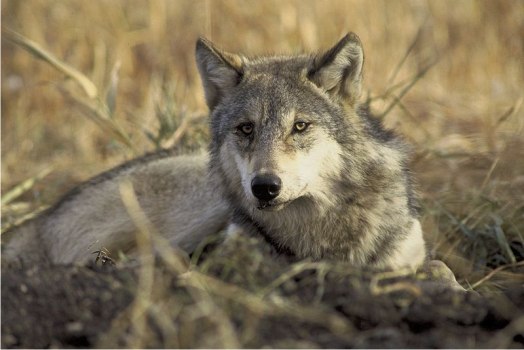 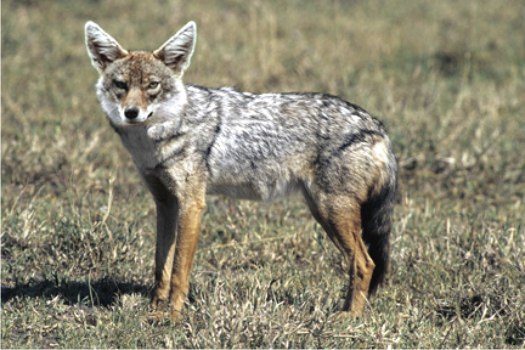
Gray Wolf ©
U.S. Fish
and Wildlife Service, Hollingsworth ~
Golden
Jackal
©
Tbjornstat
Three Gene Mutations involved
in Inheritance
of Canine Coat Type
Summary by Dr.
Dominique
de Caprona
© de Caprona
2009
All
photographs copyrighted to their photographers. Please do not use for
any
purpose without asking
In an article
entitled "Coat
variation in the Domestic Dog is Governed by Variants in Three Genes"
by Cadieu et al (2009), the authors analyse for the first time the
genes
and their mutations underlying the inheritance of different coat
lengths
and curls in dog breeds.
622 dogs
representing all
coat phenotypes and 108 of some 160 AKC recognized breeds*were
sampled.
The authors find
mutations
in three distinct genes: RSPO2 (encoding R-spondin-2), FGF5 (fibroblast
growth factor-5) and KRT71(keratin-71). These mutations together
influence 95% of coat types found in pure-bred dogs in the United
States
of America.
Ancestral
state of
these three genes:
The short
haired dog breeds
all have the ancestral state of these three genes found in Golden
Jackal,
Gray Wolf and Wolf.
Sighthound examples:
Greyhound,
Italian Greyhound, Whippet. African
example:
Basenji.
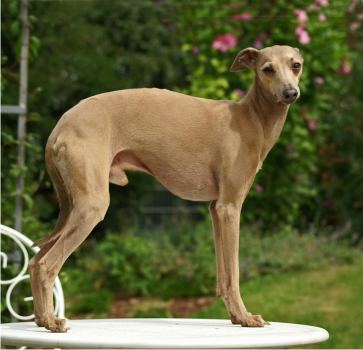 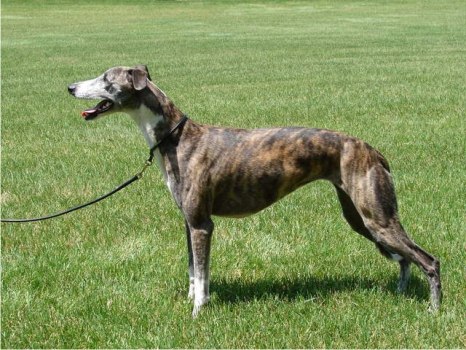
Italian Greyhound
©
Schwab ~ Whippet © Gail Wieberdink
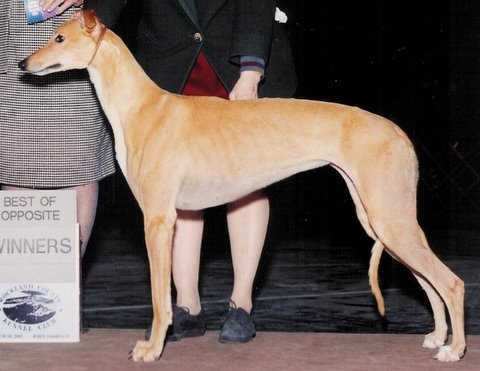
Greyhound ©
Karen Lorenzo ~
Ancestral state of
the three
genes
Mutations:
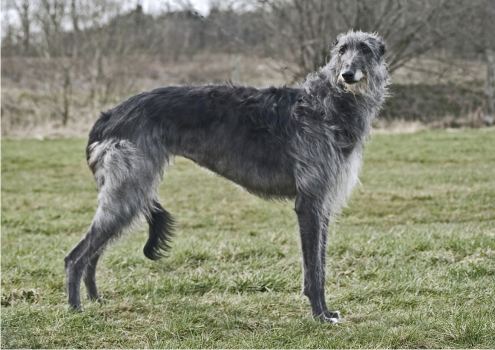 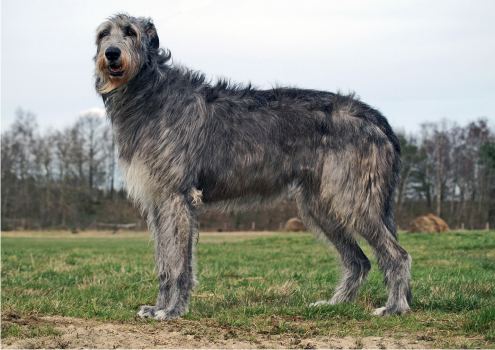
Scottish Deerhound
©
R. Schwab ~ Irish Wolfshound © R. Schwab
Mutation of the
RSPO2 gene
The breeds
with wire-hair,
moustache and eyebrows show a mutation in the RSPO2 gene.
Sighthound
examples: Irish Wolfhound, Scottish Deerhound
The breeds with
curly-wire
hair, longer than wire-hair and kinked instead of straight, show
mutations
in the RSPO2 and KRT71 genes. Example: Airedale Terrier
Long-haired breeds
carry the mutation in the FGF5 gene. Sighthound examples:Borzoi,
Saluki
Breeds with long
soft
coat, moustache and eyebrows carry the mutation in the FGF5 and
RSPO2
genes. Example: Bearded Collie
Breeds with curly
long
coat carry the mutations in both FGF5 and KRT71. Example: Bichon
Frisé.
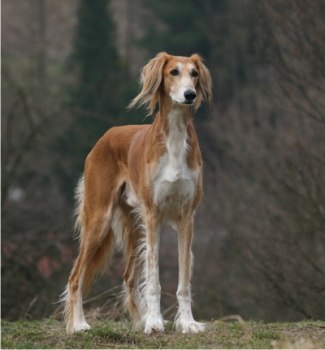 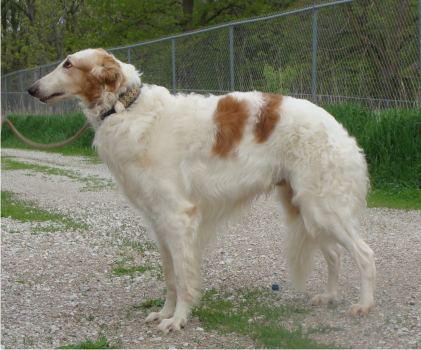
Saluki ©
Nina
Neswadba ~ Borzoi © de
Caprona ~
Mutation of the FGF5
gene
This study
shows that
most of the highly variable canine coat types can be explained by the
combined
effects of as few as 3 gene mutations.
Interestingly three
breeds
with very long coats, the Silky Terrier, the Yorkshire Terrier and the Afghan
hound are the exception. These breeds do not show any
difference
to short coated breeds in FGF5 or its mutation, suggesting that other
genes
are involved in hair length.
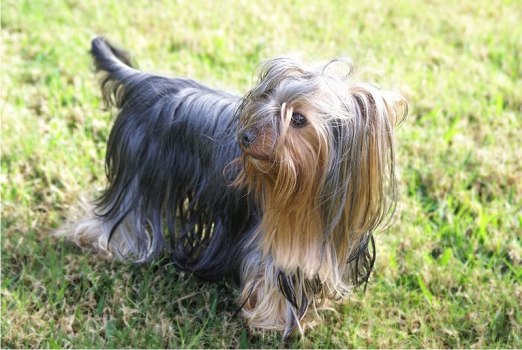 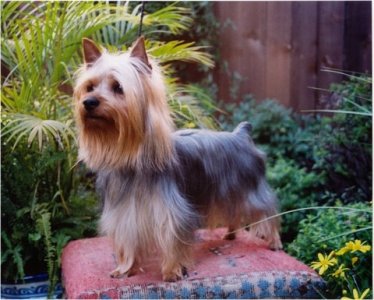
Yorkshire Terrier
©
egarc2 ~ Silky Terrier © Leslie Manning
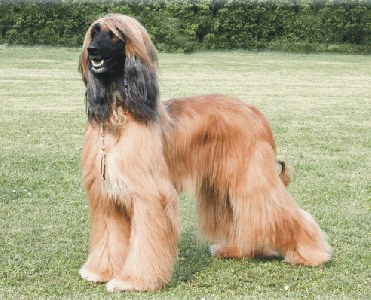
Afghan Hound ©
R. Schwab
Exceptions in the
study
Aknowledgements
I thank Heidi G.
Parker for
fine tuning this text and all the photographers for their pictures.
References
Edouard
Cadieu, Mark Neff,
Pascale Quignon, Kari Walsh, Kevin Chase, Heidi G. Parker, Bridgett M.
VonHoldt, Alison Rhue, Adam Boyko, Alexandra Byers, Aaron Wong, Dana S.
Mosher, Abdel G. Elkahloun, Tyrone C. Spady, Catherine André, K.
Gordon Lark, Michelle Cargill, Carlos D.Bustamante, Robert K.Wayne,
Elaine
A. Ostrander (2009):"Coat Variation in the Domestic Dog Is
Governed
by Variants in Three Genes" in www.sciencexpress.org / 27 August
2009
/ Page 1 / 10.1126/science.1177808
Author's notes
* The
always short-haired African Sighthound breeds, Sloughi
and
Azawakh, are not yet recognized by the American Kennel Club,
hence not part of this study. However, they are probably like all other
short coated breeds in the study and have the ancestral state of all
three
genes studied here.
ABOUT
THE
AUTHOR
|

